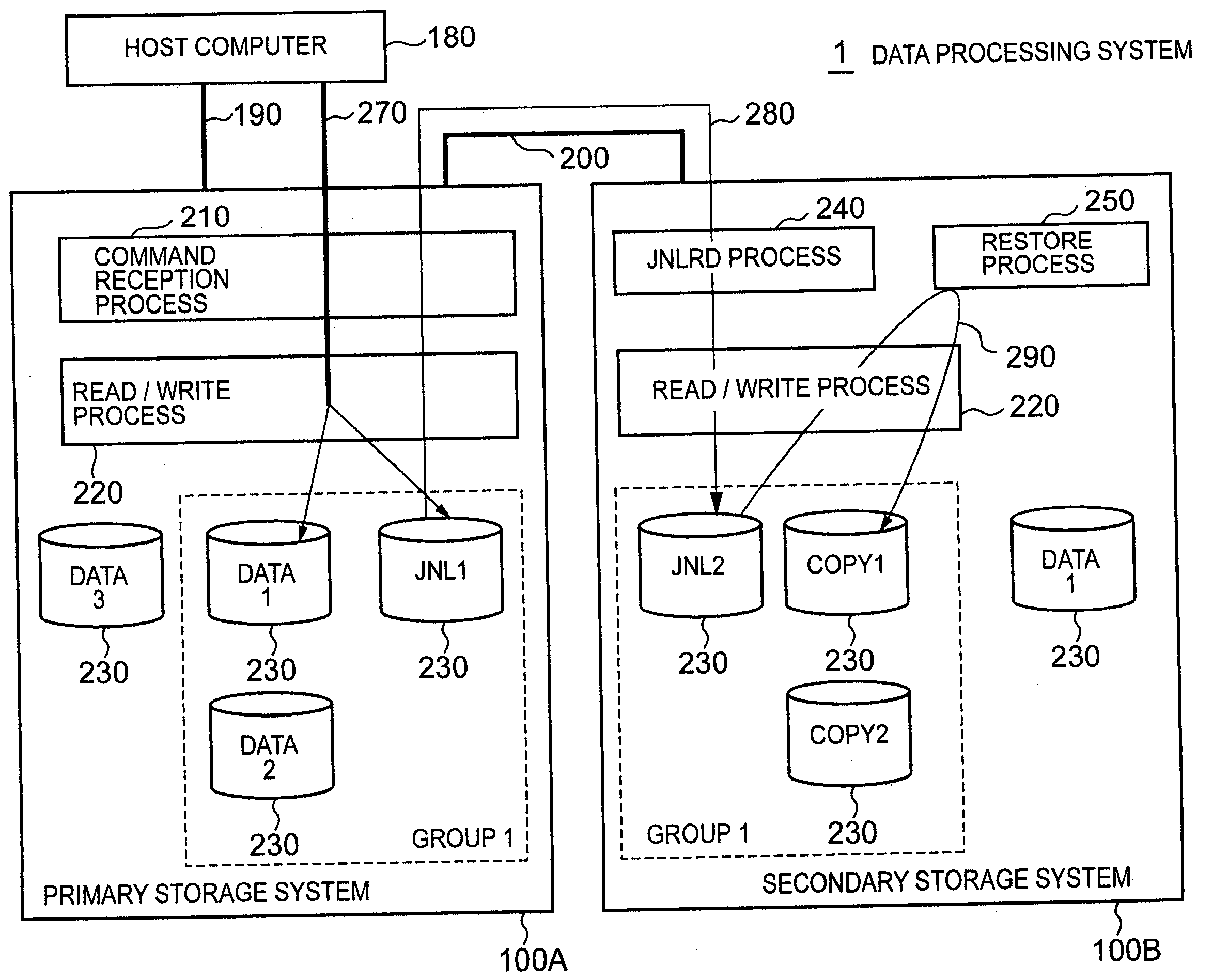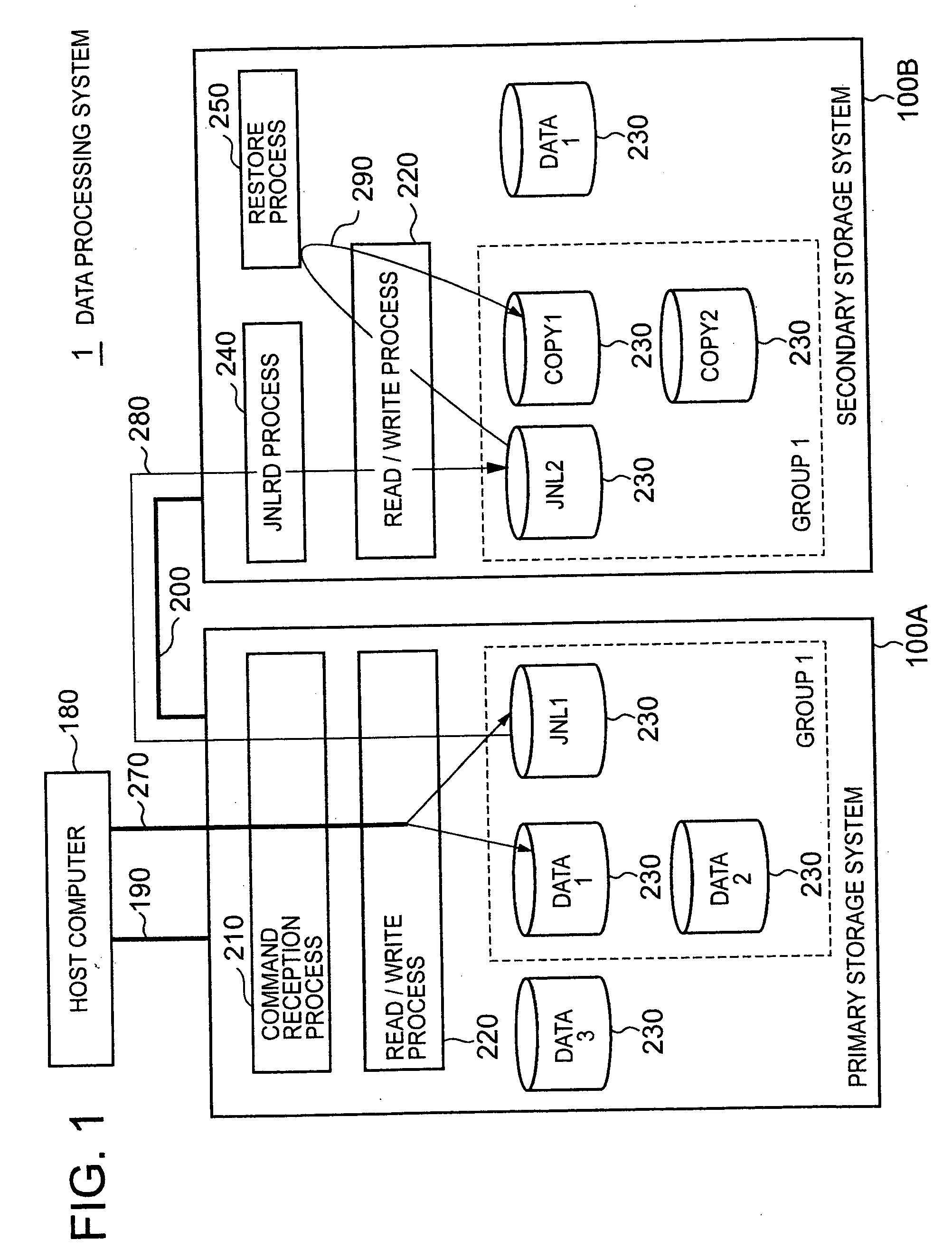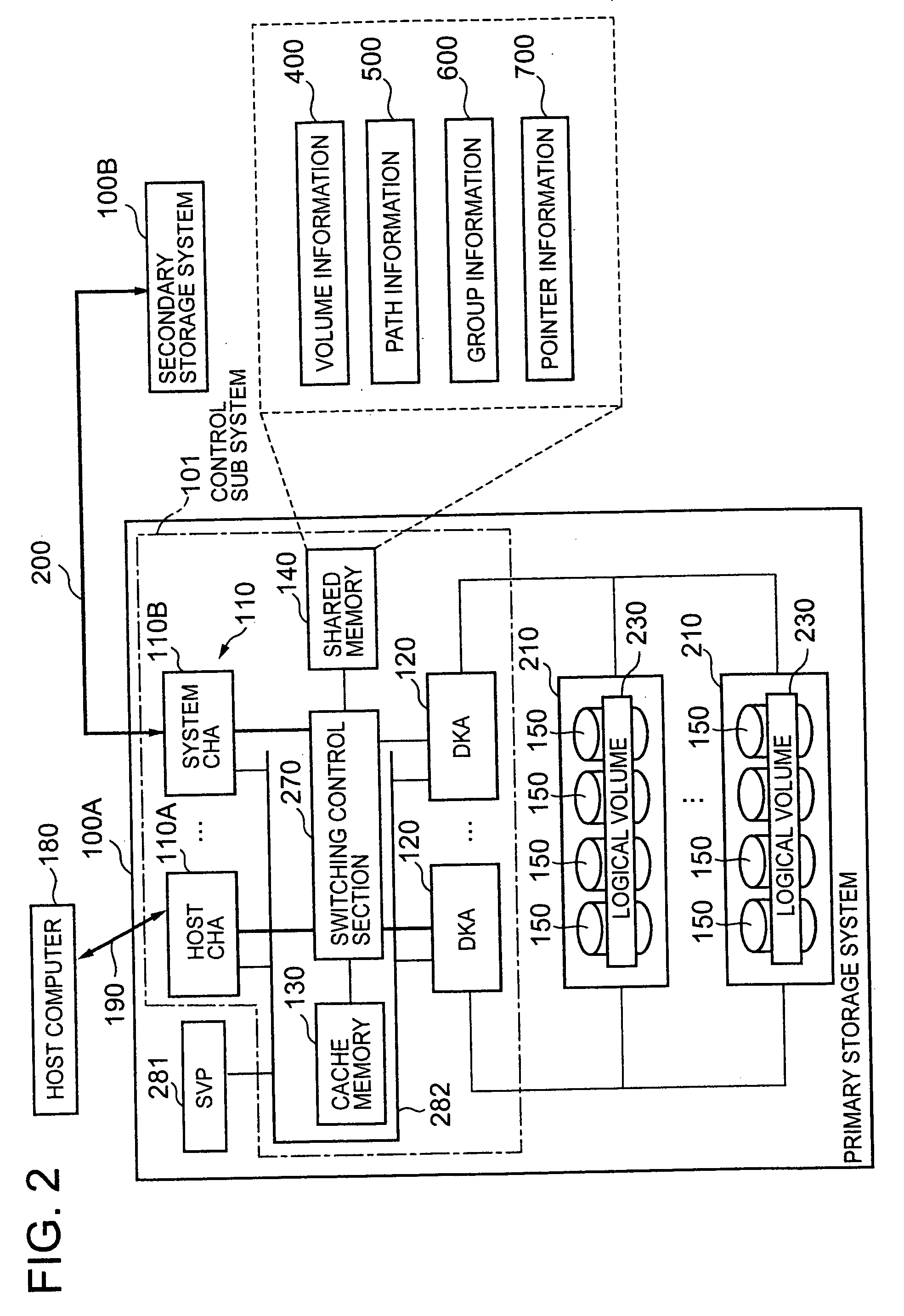Storage system and data processing system
- Summary
- Abstract
- Description
- Claims
- Application Information
AI Technical Summary
Benefits of technology
Problems solved by technology
Method used
Image
Examples
embodiment 1
[0233]FIG. 23 shows an overview of a compositional example of a data processing system relating to a first embodiment of one mode of implementing the present invention. The following description focuses principally on the points of difference with respect to the aforementioned mode of implementation, and points which are common with the aforementioned mode of implementation are explained briefly or omitted from this description. Moreover, in the following description, the reference numeral 101A is appended to the control sub-system of the primary storage system 100A, and the reference numeral 101B is appended to that of the secondary storage system 100B. Moreover, the volume information, path information, group information and pointer information provided in the primary storage system 100A contain information relating to the primary storage system 100A, and are appended with the suffix A. At least one of the volume information 400A, the path information 500A, the group information 6...
embodiment 2
[0260] Next, a second embodiment of one mode of implementing the present invention will be described. The second embodiment is further example of application of the first embodiment described above. The following description focuses principally on the points of difference with respect to the aforementioned first embodiment, and points which are common with the aforementioned first embodiment are explained briefly or omitted.
[0261] In the second embodiment, the write data region in the journal logical volume is divided into a plurality of sub write regions. The plurality of sub write regions may respectively have the same storage capacity or they may have different storage capacities. In this second embodiment, they each have the same storage capacity. In other words, in the second embodiment, the write data region in the journal logical volume is divided equally into a plurality of sub write regions. Hereinafter, the individual sub write regions are called “extents”.
[0262]FIG. 27 ...
second embodiment
(B) Second Modification of Second Embodiment
[0285] The second modification is a further modification of the first modification example, wherein the primary storage system 100A acquires a plurality of journals and sends them to the secondary storage system 100B, in response to one journal read command. A more concrete description is given below.
[0286] In the journal reception process described with respect to FIG. 15, the control sub-system 101A of the primary storage system 100A acquires and sends the write data stored in consecutive storage regions of the same extent. More specifically, for example, in FIG. 27, the control sub-system 101A ascertains from the pointer information 700A, and the like, that the two write data registered in consecutive regions of the sub write region logical volume #1A correspond respectively to update number 8 and update number 12. Thereby, it generates update information including the update number 8 and a journal containing write data corresponding t...
PUM
 Login to View More
Login to View More Abstract
Description
Claims
Application Information
 Login to View More
Login to View More - R&D
- Intellectual Property
- Life Sciences
- Materials
- Tech Scout
- Unparalleled Data Quality
- Higher Quality Content
- 60% Fewer Hallucinations
Browse by: Latest US Patents, China's latest patents, Technical Efficacy Thesaurus, Application Domain, Technology Topic, Popular Technical Reports.
© 2025 PatSnap. All rights reserved.Legal|Privacy policy|Modern Slavery Act Transparency Statement|Sitemap|About US| Contact US: help@patsnap.com



